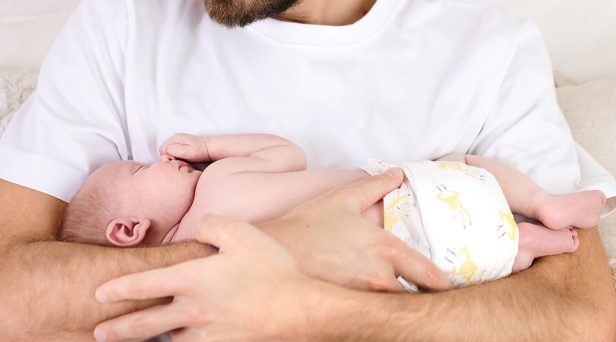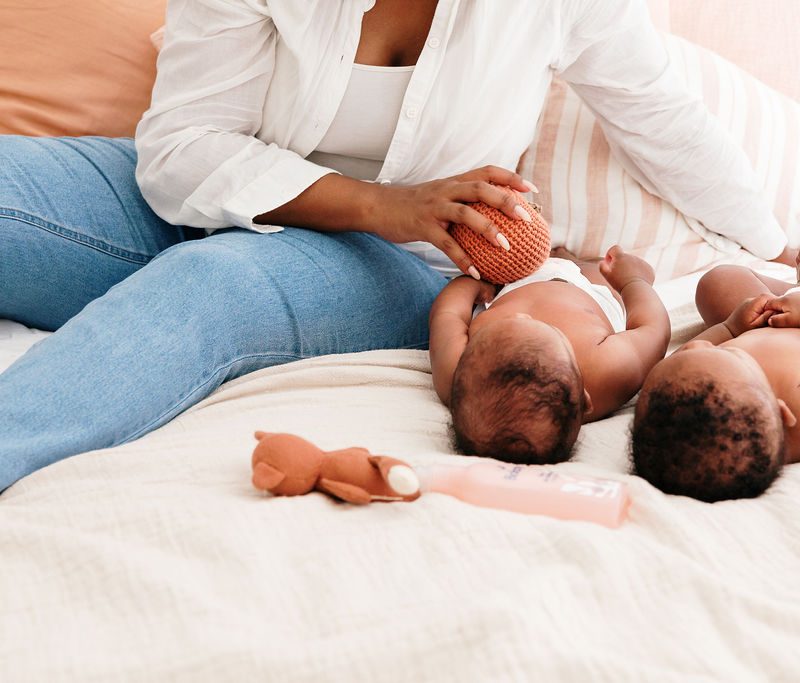
A baby’s diaper area is put to the test during the first few months of life. Numerous external aggressions (urine, stools, diaper rubbing, etc.) weaken the epidermis, leading to redness and irritation.
A baby’s diaper area is put to the test during the first few months of life. Numerous external aggressions (urine, stools, diaper rubbing, etc.) weaken the epidermis, leading to redness and irritation.
When to change a baby?
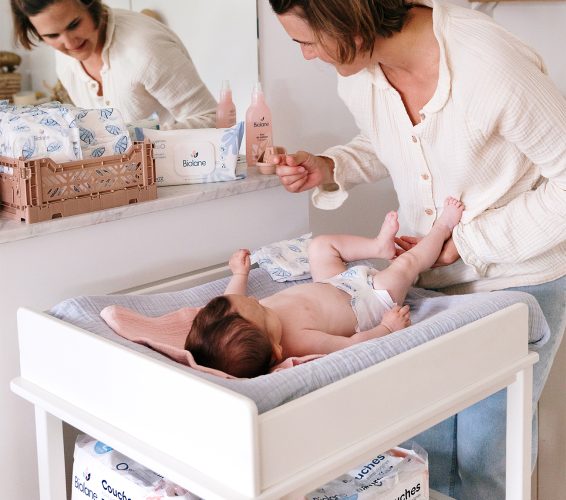
Some babies don’t cry when they need to be changed. So check regularly that your child’s diaper isn’t soiled, so that his bottom doesn’t come into prolonged contact with urine or stools.
Ritualize this gesture to protect your baby’s diaper area.
For the first few weeks, change your baby according to the number of feedings, before or after each feed or bottle. Over the following months, changing will become less frequent. Make sure that your baby’s diaper is always clean before naptime or bedtime, so that he can fall asleep without being disturbed by a dirty diaper.

The essentials for changing your baby with peace of mind
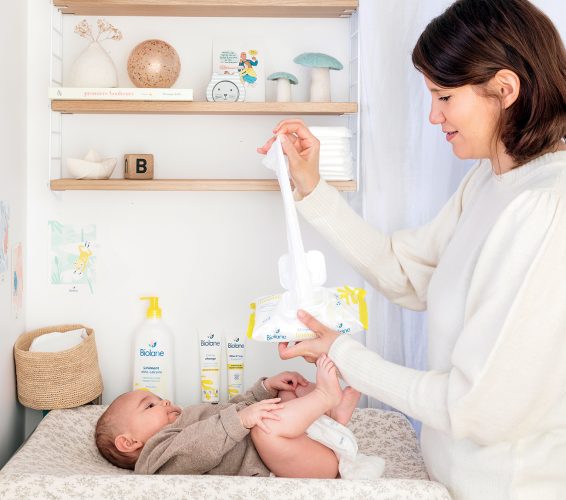
- Comfortable, raised area.
- Before changing your baby, make sure you don’t leave him alone on the changing table.
- Necessary products: liniment (or any baby cleansing lotion and water), absorbent cotton, water and, if necessary, diaper change cream or water paste if your child suffers from diaper rash.
- A closed garbage can nearby, to avoid unpleasant smells.
When choosing your diapers or toiletries, avoid long lists of ingredients and opt for natural formulas.

Oleo-limestone liniment
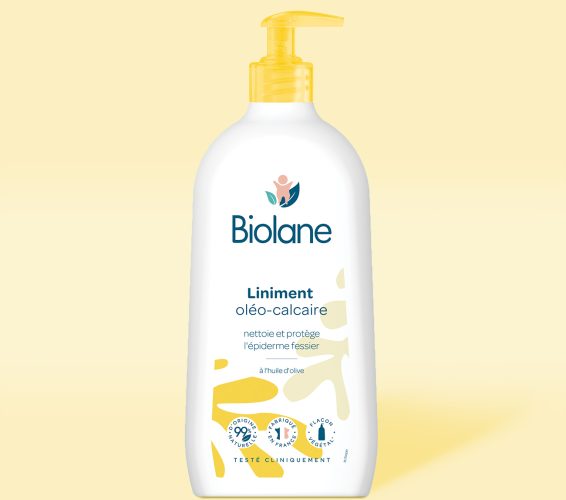
The natural solution for gentle diaper changes
- Limits the appearance of diaper rash.
- Leaves a moisturizing film on the diaper area.
- Natural, minimalist composition

The right gestures for changing your baby and preventing irritation
Does diapering depend on what’s in the diaper?
If there’s only urine, a little liniment on the cotton pad is enough to clean. If there’s stool, wet a cotton pad with lukewarm water to clean the stool, then wipe a cotton pad with liniment to leave a moisturizing film on the skin.
Caution when changing little girls
When changing a little girl, it is important to clean from front to back to avoid urinary tract infections.
How can you limit the appearance of diaper rash?
- Change your baby’s diaper as often as possible.
- Use diapers with a soft, natural inner lining.
- Be sure to dry your baby’s diaper area, especially in the folds, by gently dabbing it dry, to avoid maceration.
- Adapt diapers so that they’re neither too small nor too tight and are fastened loosely enough to allow air to circulate.
What to do in the case of irritation or redness of the diaper area?
In the case of minor redness, apply a thick layer of diaper change cream. Formulated with zinc and panthenol, it reinforces the skin’s natural protective film and soothes mild irritation. With its non-greasy texture, it absorbs excess moisture and insulates the epidermis from the aggression of urine and stools. In the event of severe redness or oozing, replace the diaper change cream with a water paste.
Midwife’s advice
Use a gentle cleansing gel once a day alongside liniment and other products used for diapering.
Good to know
The epidermis of the bottom is a real barometer of baby’s well-being. It can be a sign of poor hygiene (insufficient diaper changes, inappropriate toiletries), or a sign of intestinal problems, teething troubles, or illness.




